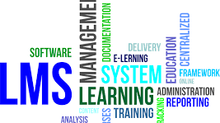Virtual Reality and eLearning
- Dylan Hedges
- Aug 9, 2018
- 2 min read
Virtual Reality (VR) is something that has been around for a long time but has only started to gain real momentum over the past few years. The concept of VR is to immerse the user in an interactive computer generated virtual world, this is displayed through a VR headset that covers the users vision, other sensors and controls may also be used in addition to this.
Several industries have looked into utilising VR with the eLearning industry being one of them. Not only could VR use be used as an innovative way for learners to take digital training but could potentially change the way we teach learners in a way that traditional eLearning can not achieve.
Below are 3 ways you could use Virtual Reality to innovate your eLearning and classroom training.
1. Real life scenarios
VR could be used as a learning tool to train people through recreating scenarios that are not possible to replicate in real life. For example this could be used by trainee firefighters to train on how to react in a burning building or it could be used by surgeons to practice complex surgeries. The main benefit of this is that it is possible to train people in a real life scenario without the risk of real life consequences.
2. Virtual trips
Virtual trips could be used in the classroom by teachers to provide a visual component to what they are teaching. For example a history teacher might be teaching their students about ancient Egypt, being able to give the students VR headsets which guides them through the pyramids and historic locations would add an extra level of depth and engage students in what they are learning and could be used as a cost efficient solution to taking students in person.
3. Virtual Classrooms
Virtual classrooms could dramatically change who has access to education. Traditional classrooms require a physical presence from students with the teacher standing up front. Taking the same concept teachers could give the same classroom sessions from any location, students could then join the classroom using their VR headsets and learn in the same way. Not only does this remove the distance barriers to who has access to education but also reduces the cost of classes as people could take courses from their own homes.































Comments